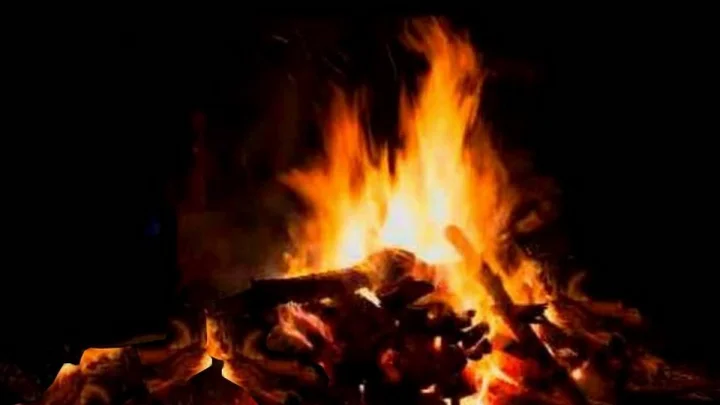Varanasi, also known as Kashi or Banaras, is called the City of Salvation — a sacred place where life and death meet at the banks of the Ganges. The eternal flames of Manikarnika Ghat, believed to be burning since the time of King Harishchandra, have made it one of the most mysterious cremation sites in the world. Recently, this ancient cremation ground has drawn attention on social media, as people on Quora and Instagram began asking: Why do people write the number “94” on the ashes after the pyre cools down?
The Story Behind the Name “Manikarnika”
According to Hindu mythology, Manikarnika got its name because Goddess Sati’s ear ornament (karna kundal) fell at this spot.
Another legend says that Lord Vishnu once created a sacred pond here with his Sudarshan Chakra while Lord Shiva was in deep meditation. When Shiva bathed in the pond, his earring (Manikarnika) slipped and was lost forever — hence, the place became known as Manikarnika Ghat.
Why Kashi Is Called the Mahashmashan
Kashi is called Mahashmashan — the great cremation ground — because the fires of Manikarnika Ghat never go out. Day and night, funeral pyres burn continuously, symbolizing the city’s spiritual promise of moksha (liberation).
It is believed that when a person is cremated here, Lord Shiva himself whispers the Taraka Mantra into their ears, granting the soul direct passage to salvation.
Who Writes ‘94’ and Why
At Manikarnika, the person performing the final rites — usually a family member — writes the number 94 on the ashes after the fire has cooled. This act is part of a sacred local tradition, symbolizing the wish for the departed soul’s liberation.
‘94’ — The Mantra of Moksha
Locals call 94 the Mukti Mantra (mantra of liberation). After writing it, the mourner prays to Lord Shiva to guide the soul towards heaven, then breaks a water pot on the pyre — marking the end of the ritual.
The Meaning Behind the Number 94
Priests in Kashi explain that a human being possesses 94 attributes or virtues, which can increase or decrease through one’s actions. The remaining six — life, death, fame, disgrace, gain, and loss — are preordained by Brahma and beyond human control.
Thus, at death, the 94 human attributes are symbolically offered to Lord Shiva through the ashes, seeking liberation from the cycle of rebirth.
A Tradition Unique to Banaras
This practice is not mentioned in any Hindu scripture, nor is it followed anywhere else in India. It is a tradition passed down among the cremation workers and locals of Banaras.
In essence, writing ‘94’ is believed to be a symbolic request for moksha, performed only at the sacred Manikarnika Ghat — a ritual that binds Banaras eternally to the mystery of life, death, and liberation.
Disclaimer: The content provided here is based on beliefs and information only. Always consult a concerned expert.


